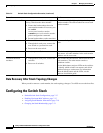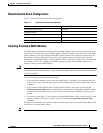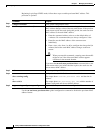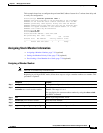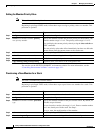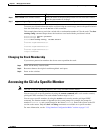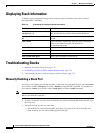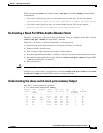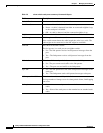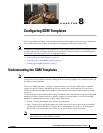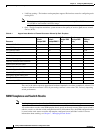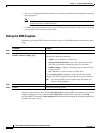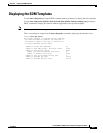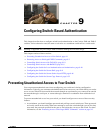
7-24
Catalyst 2960 and 2960-S Switch Software Configuration Guide
OL-8603-09
Chapter 7 Managing Switch Stacks
Troubleshooting Stacks
Table 7-5 show switch stack-ports summary Command Output
Field Description
Switch#/Port# Member number and its stack port number.
Stack Port Status
• Absent—No cable is detected on the stack port.
• Down—A cable is detected, but either no connected neighbor is up,
or the stack port is disabled.
• OK—A cable is detected, and the connected neighbor is up.
Neighbor Switch number of the active member at the other end of the stack cable.
Cable Length Valid lengths are 50 cm, 1 m, or 3 m.
If the switch cannot detect the cable length, the value is no cable. The
cable might not be connected, or the link might be unreliable.
Link OK This shows if the link is stable.
The link partner is a stack port on a neighbor switch.
• No—The link partner receives invalid protocol messages from the
port.
• Yes—The link partner receives valid protocol messages from the
port.
Link Active This shows if the stack port is in the same state as its link partner.
• No—The port cannot send traffic to the link partner.
• Yes—The port can send traffic to the link partner.
Sync OK
• No—The link partner does not send valid protocol messages to the
stack port.
• Yes—The link partner sends valid protocol messages to the port.
# Changes to LinkOK This shows the relative stability of the link.
If a large number of changes occur in a short period of time, link flapping
can occur.
In Loopback
• No—At least one stack port on the member has an attached stack
cable.
• Yes—None of the stack ports on the member has an attached stack
cable.



